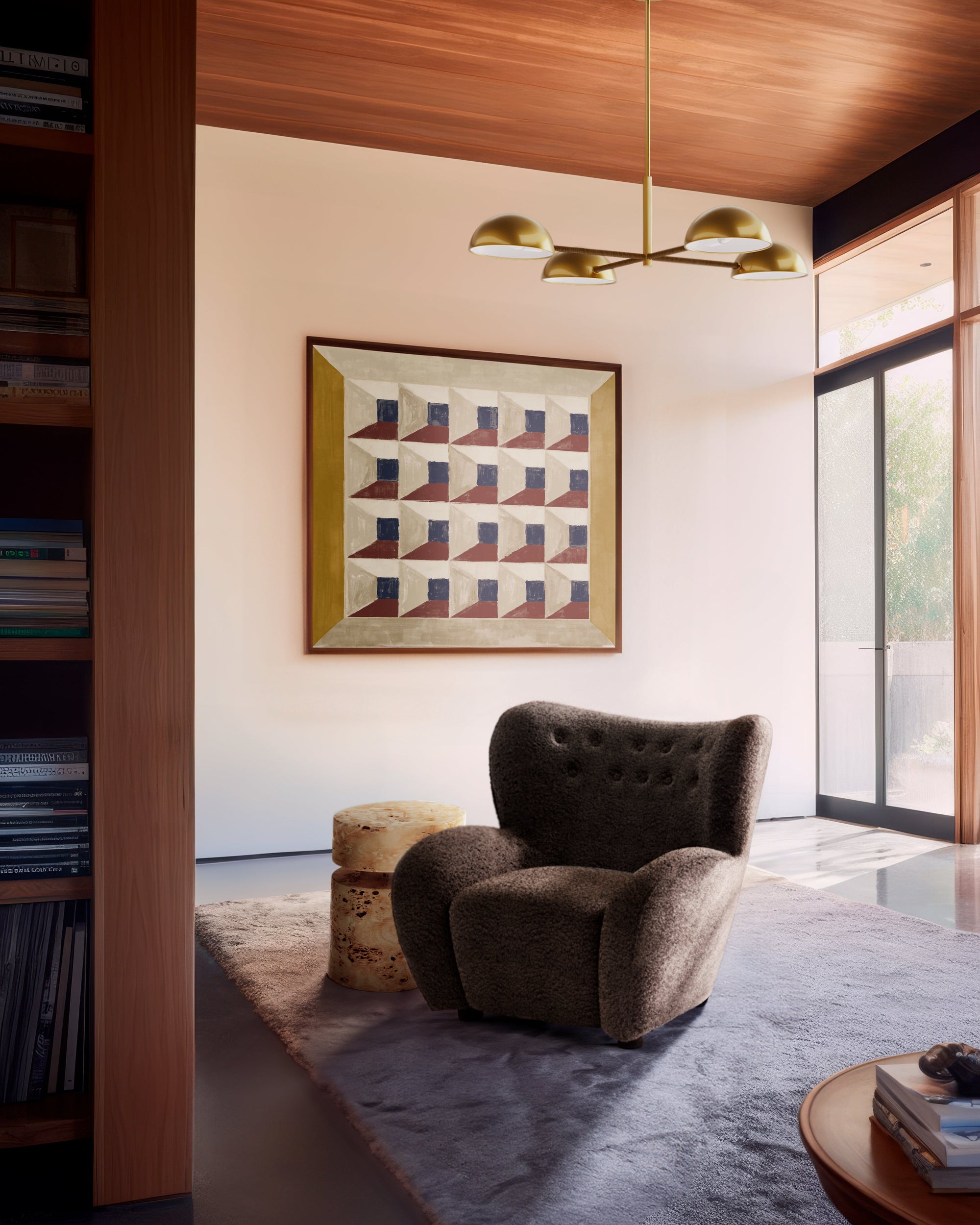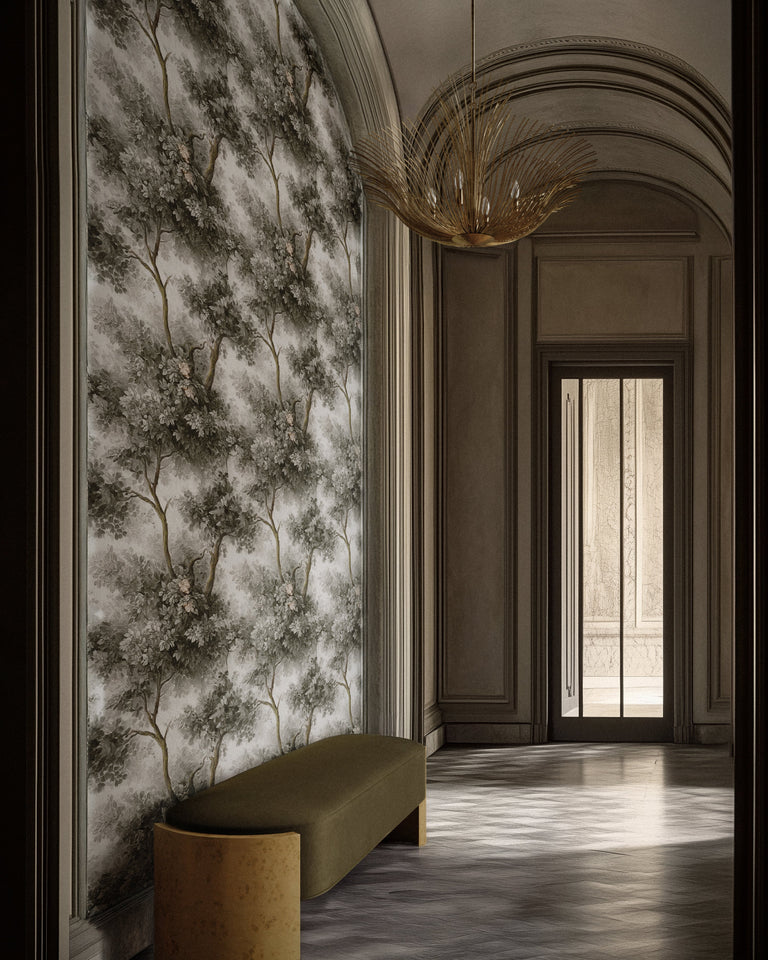
Chairs with Ears: The Intimate Architecture of Scandinavian Seating
In the lexicon of furniture design, few terms capture both whimsy and sophistication quite like "chairs with ears." This endearing phrase describes what formal design history calls winged seating, chairs whose extended side panels create an embrace-like silhouette that offers both visual drama and intimate comfort. Yet beneath this charming nomenclature lies a profound understanding of human psychology and the delicate relationship between furniture and the spaces we inhabit.
The story of chairs with ears is fundamentally a Scandinavian narrative, one that begins in the austere beauty of Nordic winters and evolves into a design philosophy that has influenced luxury seating across the globe. It is a tale of how functional necessity: the need for warmth and protection from drafts, transformed into something far more sophisticated: furniture that creates intimate spaces within larger rooms, chairs that offer not just physical comfort but psychological sanctuary.
The Nordic Genesis: Function as Poetry
The origins of winged seating trace back to 17th-century Europe, where high-backed chairs with protective side panels served the practical purpose of shielding occupants from cold drafts in poorly heated rooms. These early examples were crude by today's standards—functional objects born from necessity rather than aesthetic consideration. It would take the revolutionary vision of Scandinavian designers to transform this utilitarian concept into an expression of refined living.
The transformation began in the early 20th century, as Scandinavian designers embraced what would become known as "democratic design": the belief that beautiful, well-made objects should be accessible to all, not merely the wealthy elite. This philosophy demanded a different approach to luxury, one based not on ostentatious display but on the subtler pleasures of proportion, material integrity, and functional perfection.
Danish masters like Finn Juhl and Swedish innovators like Bruno Mathsson recognized that the "ears" of winged seating could serve purposes far beyond draft protection. In the hands of these visionaries, extended side panels became architectural elements that could define intimate spaces within larger rooms, create visual rhythm through repetition, and offer the kind of enveloping comfort that transforms mere sitting into genuine rest.

Image courtesy of the Finn Juhl estate
The Psychology of Embrace: Kaare Klint's Revolutionary Understanding
No figure looms larger in the evolution of chairs with ears than Kaare Klint, the founding father of Danish furniture design whose influence extends far beyond his own remarkable body of work. Klint understood that furniture design wasn't merely about creating beautiful objects but about understanding human behavior at its most fundamental level.
Working in the 1920s and 1930s, Klint conducted extensive research into human proportions and ergonomics, but his genius lay in recognizing that comfort extended beyond mere physical fit: "environmental control", or the ability to moderate exposure to surrounding stimuli while maintaining connection to their environment.
The winged chair became Klint's solution to this fundamental human need, designing an intimate space that offered visual and acoustic privacy without complete isolation. A person seated in a properly designed winged chair could engage with room conversations when desired or retreat into contemplative solitude without leaving their seat.
This insight proved revolutionary for modern living, where open floor plans and flowing spaces created new challenges for creating intimate moments within larger social environments. Klint's chairs with ears offered a sophisticated solution: furniture that could provide privacy and intimacy without walls.

Image Courtesy of Bonhams
The Wegner Revolution: Sculpture Meets Sanctuary
Hans J. Wegner, perhaps the most internationally celebrated of the Danish masters, brought an entirely different sensibility to winged seating. Where Klint approached the form through ergonomic research and social observation, Wegner's genius lay in his ability to transform functional elements into pure sculptural expression.
Wegner's most famous contribution to the chairs-with-ears tradition came with his Papa Bear Chair of 1951, a piece that redefined what winged seating could become. Rather than treating the side panels as mere functional appendages, Wegner integrated them into the chair's overall form so seamlessly that they appeared to grow naturally from the frame itself.

Image courtesy of the Art Institute of Chicago
The Papa Bear Chair demonstrated that chairs with ears could be simultaneously monumental and intimate, sculptural and comfortable. The piece commanded attention in any room while offering its occupant complete visual and acoustic protection. It was, in essence, a private retreat disguised as public furniture—a concept that would prove enormously influential for luxury seating design.
Wegner's approach to materials proved equally revolutionary. Rather than hiding the construction beneath heavy upholstery, he celebrated the underlying structure, allowing the beautiful lines of solid wood frames to remain visible even when upholstered. This transparency of construction became a hallmark of Scandinavian design philosophy: nothing hidden, nothing false, every element contributing to both function and beauty.
The Material Philosophy: Honest Luxury in Natural Forms
The Scandinavian approach to chairs with ears reflected a broader philosophy about materials and construction that set Nordic design apart from other luxury traditions. While French and Italian designers often emphasized rich fabrics and elaborate decorative treatments, Scandinavian masters found luxury in material honesty and construction integrity.
This philosophy demanded that every element of a chair serve both functional and aesthetic purposes. The wood frame wasn't merely structural but sculptural. The upholstery wasn't simply comfortable but contributed to the chair's overall visual rhythm. Even the joinery became decorative, with exposed craftsmanship serving as ornamentation in its own right.
The result was furniture that appeared simple at first glance but revealed increasing complexity and sophistication upon closer examination. A properly executed Scandinavian winged chair might appear almost austere from across a room, yet offer rich tactile experiences and subtle visual details that could sustain interest through years of daily use.

Image courtesy of the Finn Juhl estate
The Contemporary Renaissance: Global Influence of Nordic Wisdom
The influence of Scandinavian chairs with ears extends far beyond Nordic borders, inspiring luxury furniture designers across the globe to reconsider the relationship between comfort, privacy, and social engagement. Contemporary masters from Italy to Japan have adapted the basic principles of winged seating to their own cultural contexts, creating pieces that honor the Scandinavian insight while expressing distinctly regional aesthetic sensibilities.
This global adaptation has led to remarkable innovation in materials and construction techniques. Where the original Danish masters worked primarily in solid wood and natural textiles, contemporary designers experiment with advanced composites, innovative upholstery techniques, and hybrid construction methods that combine traditional craftsmanship with modern engineering.
Yet the most successful contemporary interpretations remain true to the fundamental Scandinavian insight: that the best chairs with ears don't announce their sophistication through obvious luxury cues but reveal their quality through sustained use. They're pieces that become more comfortable over time, that develop character through interaction, that improve rather than deteriorate with age.
Introducing the Mondaine Lounge Chair: Scandinavian Heritage Meets American Craft
Today, we proudly introduce the Mondaine Lounge Chair, a striking blend of design, size, and comfort that honors the artful Scandinavian design history while bringing contemporary interpretation to this beloved form. The beautifully shaped silhouette promises to elevate any living space, offering luxurious relaxation where beauty and comfort exist in perfect harmony.
The Mondaine represents more than aesthetic homage to Scandinavian masters—it embodies a commitment to the principles that made their work timeless. The chair's proportions reflect decades of research into human comfort and environmental psychology, while its materials celebrate the natural beauty that Nordic designers championed.
Each Mondaine Lounge Chair is handmade by skilled artisans in North Carolina, where traditional woodworking techniques meet contemporary understanding of ergonomics and durability. This marriage of Appalachian craft tradition with Scandinavian design philosophy creates pieces that honor both heritage and innovation.
The construction process reflects the same attention to detail that distinguished the work of Klint, Wegner, and their contemporaries. Solid hardwood frames are joined using time-tested techniques that ensure structural integrity for generations. Upholstery is applied by hand, with careful attention to the subtle curves and angles that give the chair its distinctive silhouette.
The Art of the Embrace: Understanding Mondaine's Design Language
The Mondaine's "ears" represent a contemporary interpretation of the protective embrace that defines great winged seating. Rather than simply extending the back vertically, the design curves the side panels forward slightly, creating a more enveloping sensation that modern users find particularly comforting in our increasingly connected yet isolated world.
The proportions reflect careful study of contemporary living spaces, where furniture must work equally well in intimate settings and open floor plans. The Mondaine commands presence without overwhelming smaller rooms, while offering the visual weight necessary to anchor larger spaces.
Color and texture options honor the Scandinavian tradition of material honesty while acknowledging contemporary preferences for customization. Each upholstery choice reveals different aspects of the chair's form, from rich leathers that emphasize the sculptural qualities to soft fabrics that highlight the comfort-focused design.
The Future of Intimate Seating: Lessons from the North
As our homes become increasingly important as sanctuaries from accelerated modern life, the need for furniture that provides genuine respite becomes more critical. The tradition of chairs with ears, refined through decades of Scandinavian innovation and now expressed through contemporary American craftsmanship, offers a proven solution to this essential human need.
The Mondaine Lounge Chair represents not just a new product but a recommitment to the principles that made Scandinavian design revolutionary: the belief that true luxury lies not in ostentation but in the perfect marriage of form and function, that the best furniture improves daily life through subtle enhancement rather than obvious display.
In a world increasingly dominated by digital interfaces and virtual connections, the physical embrace offered by well-designed winged seating becomes more valuable than ever. These chairs provide what technology cannot: the tactile comfort and spatial definition that restore the nervous system and prepare the mind for genuine rest.
The Enduring Appeal of the Embrace
The story of chairs with ears is ultimately a story about human nature itself—our need for both connection and solitude, our desire for comfort and beauty, our requirement for furniture that serves not just the body but the soul of good living. From the austere elegance of Danish masters to the contemporary sophistication of the Mondaine Lounge Chair, this tradition continues to evolve while honoring its fundamental insight: that the best seating doesn't just support the body but embraces the entire experience of being human.
The Mondaine joins this distinguished lineage as more than mere furniture—it stands as an invitation to a more considered way of living, where the simple act of sitting becomes an opportunity for restoration and reflection. In our increasingly complex world, such furniture offers something approaching sanctuary: a beautiful embrace that reminds us that luxury, at its finest, is deeply and ultimately human.
Discover the Mondaine Lounge Chair, where centuries of Scandinavian design wisdom meets contemporary American craftsmanship. Each piece represents our commitment to furniture that serves not just the body, but the soul of good living.
Recent Edits








